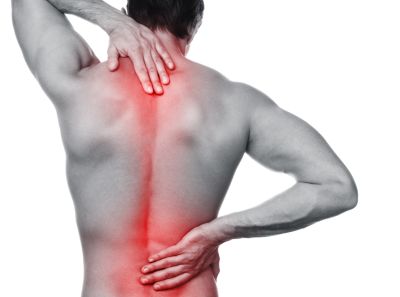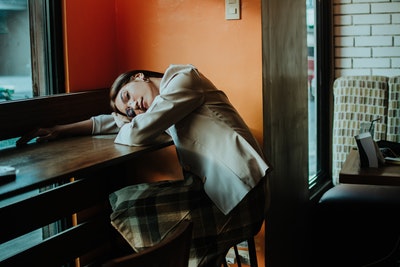9 Treatments for Back Muscle Pain to Try Today

Are you one of the millions of people that experience back pain?
You’re not alone. Nearly 80% of adults experience lower back muscle pain at least once in their lifetime. You may even experience upper back or neck pain, both commonly associated with lower back pain.
Back pain can become excruciating at times, so it’s important to have some knowledge of remedies for fast relief. Read on to learn some doctor-recommended treatments and some fast home remedies for back pain.
Medical Treatments
First, let’s cover the treatments commonly recommended or prescribed by a physician.
Before recommending a treatment plan, your doctor will give you a physical exam. Here they will test your ability to sit, stand, and walk. They may also ask you to perform special movements to determine the exact location and nature of the problem.
#1 Request an X-Ray, MRI, or CT Scan
If you find yourself suffering from chronic or regular back pain, your doctor may suggest some type of radiography.
Often times doctors will request an X-ray, MRI, or CT scan. X-rays and CT scans will show the doctor if you have any fractures, breaks, deformities, or general abnormalities in your bone structure. MRIs, on the other hand, will allow the doctor to look at your nerves, muscles, and tendons.
#2 Muscle Relaxers
After the doctor has given you the proper exam, he or she may prescribe a mild muscle relaxer to ease the pain. You’ll likely take them before bedtime, or as needed, for less than two weeks.
Common muscle relaxers might include:
- Cyclobenzaprine
- Metaxalone
- Carisoprodol
- Tizanidine
#3 Narcotics
Narcotics are often the next step up from muscle relaxers. Your doctor may prescribe narcotics if your back pain has become unbearable and inhibit your ability to function.
Narcotics are only prescribed for short-term pain relief, as most narcotics are classified as opioids and are highly addictive.
Common narcotics for back pain include:
- Oxycodone
- Vicodin (acetaminophen/ hydrocodone)
- Tramadol
- Morphine
- Hydrocodone
Narcotics can cause several common side effects such as sleepiness, anxiety, constipation, itchy skin, and more. Consult your doctor if you experience any side effects.
#4 Chiropractor
A common cause of lower back pain is the sciatic nerve. It runs down the spinal column and into your leg.
If your doctor feels you’re suffering from sciatica, then a chiropractor Scottsdale may be a treatment option. Licensed chiropractors can perform something called a sciatica adjustment, which may help offer some relief.
#5 Injections
Injections are given as both pain relief and as a diagnostic tool. Injections tend to be more effective than oral pain relief because they don’t have to be absorbed through digestion, and give medication to the exact location of the pain.
The different types of injections for back pain include
- Sacroiliac joint block
- Epidural steroid injection
- Facet rhizotomy
- Facet joint block
- Selective nerve root block (SNRB)
They tend to be the last step before surgery is considered.
#6 Surgery
As a last resort, your doctor may recommend surgery to correct your back pain. Few people actually need surgery, but if your back pain just isn’t responding to any other treatment, you may benefit from surgery.
If you have nerve compression or structural problems, such as a herniated disk, your doctor may recommend surgery.
DIY Home Remedies
If you don’t feel that your back pain is bad enough for an emergency trip to the doctor, you can try some at-home remedies like massage therapy. You’ll find the u-shaped head on massage guns work the muscles along the spine, relaxing them and removing knots. Here are a few more ideas that provide fast relief:
#7 OTC Medications
Over-the-counter medications are often the first step to treating back pain.
You can take Advil or Tylenol with a glass of water to try and alleviate the pain. Be sure not to take these medications on an empty stomach, as they can be harmful.
If you’re looking for more location-specific pain relief, you can try a lidocaine spray or numbing gel.
#8 Heat Therapy
Heat can do wonders when it comes to relieving muscle tension. Applying heat stimulates blood flow, bringing oxygen to the area. It also inhibits the body’s ability to send pain messages through your nerves and up to your brain.
Try using a heating pad for about 15-20 minutes. Be sure that there is a towel or some kind of material between you and the pad to prevent burns.
You can use rice as a makeshift heating pad if you don’t have one lying around. Fill an old sock with some rice and pop it in the microwave for about a minute or until it’s warm. The rice will hold the heat for about an hour. You can pair this heat therapy with a massage gun from somewhere like https://bangmassagegun.ca/ to help loosen your muscles and increase blood flow to the treated area.
#9 Cold Therapy
If the heat isn’t working, you can also try applying an ice pack to your back. Ice works by reducing inflammation and swelling. It also works as a local anesthetic, slowing down nerve impulses and preventing spasms.
If you don’t have any ice handy, don’t be afraid to grab a trusty bag of peas from the freezer. Since peas are small, they can easily conform to the same shape as your back.
Don’t be afraid to try both hot and cold methods. As counterintuitive as it may sound, alternating between the two methods can often provide the best relief.
Don’t Let Back Muscle Pain Ruin Your Day
Back muscle pain can be a real downer, and can even put a stop to your day. If you’re suffering from serious or chronic back pain, you may even find yourself laid up for weeks or months. Always consult a physician before experimenting with new treatments, as each case is different.
If you find that your back pain is debilitating and you find it difficult to make a doctor’s appointment, consider getting a consult through telemedicine.
Back pain doesn’t have to ruin your day. Seek help today.





